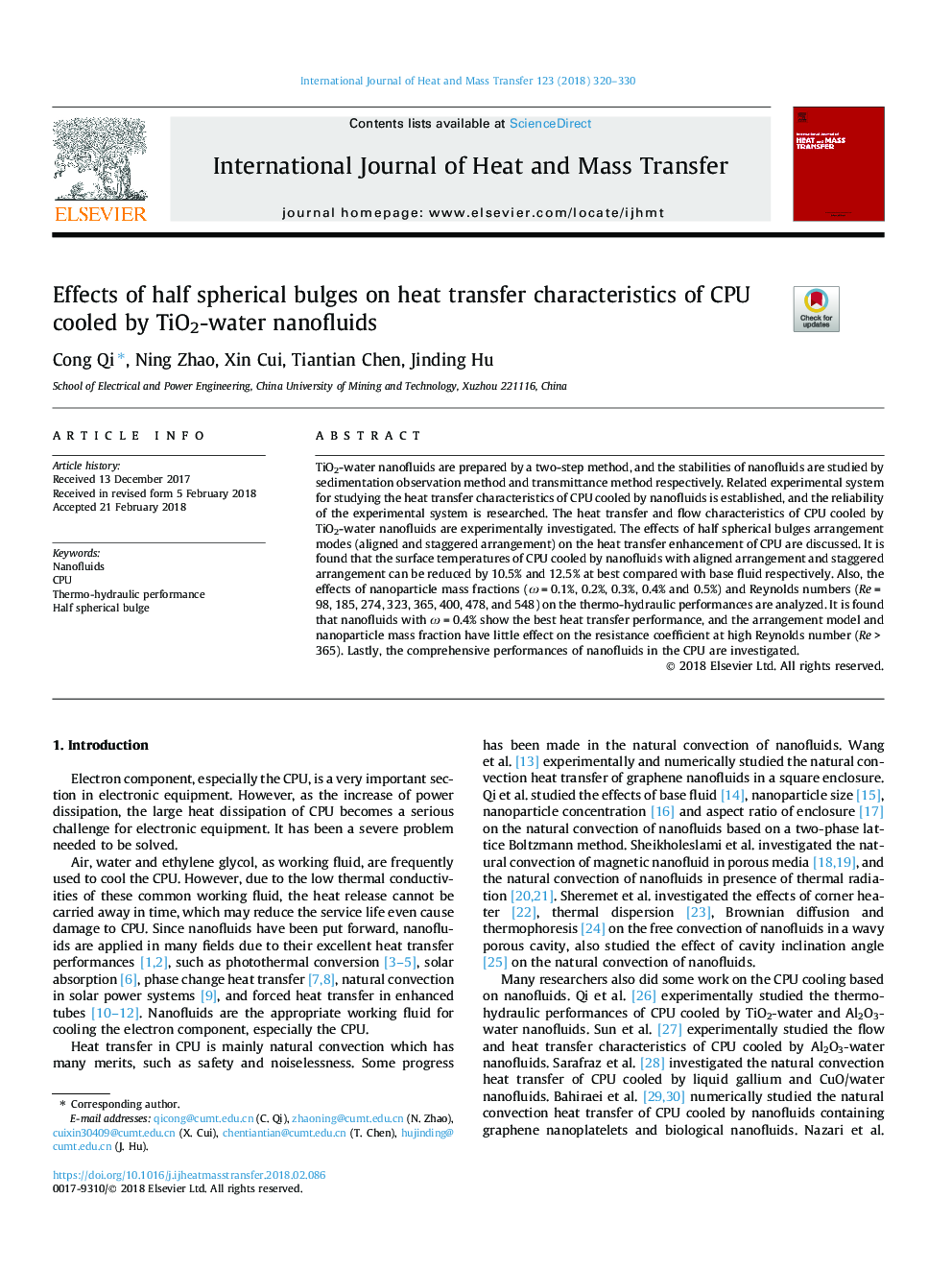| Article ID | Journal | Published Year | Pages | File Type |
|---|---|---|---|---|
| 7054238 | International Journal of Heat and Mass Transfer | 2018 | 11 Pages |
Abstract
TiO2-water nanofluids are prepared by a two-step method, and the stabilities of nanofluids are studied by sedimentation observation method and transmittance method respectively. Related experimental system for studying the heat transfer characteristics of CPU cooled by nanofluids is established, and the reliability of the experimental system is researched. The heat transfer and flow characteristics of CPU cooled by TiO2-water nanofluids are experimentally investigated. The effects of half spherical bulges arrangement modes (aligned and staggered arrangement) on the heat transfer enhancement of CPU are discussed. It is found that the surface temperatures of CPU cooled by nanofluids with aligned arrangement and staggered arrangement can be reduced by 10.5% and 12.5% at best compared with base fluid respectively. Also, the effects of nanoparticle mass fractions (Ïâ¯=â¯0.1%, 0.2%, 0.3%, 0.4% and 0.5%) and Reynolds numbers (Reâ¯=â¯98, 185, 274, 323, 365, 400, 478, and 548) on the thermo-hydraulic performances are analyzed. It is found that nanofluids with Ïâ¯=â¯0.4% show the best heat transfer performance, and the arrangement model and nanoparticle mass fraction have little effect on the resistance coefficient at high Reynolds number (Reâ¯>â¯365). Lastly, the comprehensive performances of nanofluids in the CPU are investigated.
Related Topics
Physical Sciences and Engineering
Chemical Engineering
Fluid Flow and Transfer Processes
Authors
Cong Qi, Ning Zhao, Xin Cui, Tiantian Chen, Jinding Hu,
